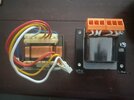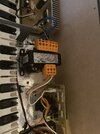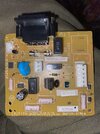Hi all
Glad to join the community. I have a Kawai KDP 80 Electronic Piano and can't get anything out of it. I've traced the 230 volt supply through the board and have 230 volts at the primary side of the transformer a Bando KT-031. The problem is I don't know what the secondary supply from the transformer should be and can't get any information I've tried Kawai and their distributors etc. The secondary is the two blue wires on the right of the picture.
I've got the service manual attached
 but can't see what the secondary is any help appreciated.
but can't see what the secondary is any help appreciated.

Glad to join the community. I have a Kawai KDP 80 Electronic Piano and can't get anything out of it. I've traced the 230 volt supply through the board and have 230 volts at the primary side of the transformer a Bando KT-031. The problem is I don't know what the secondary supply from the transformer should be and can't get any information I've tried Kawai and their distributors etc. The secondary is the two blue wires on the right of the picture.
I've got the service manual attached




